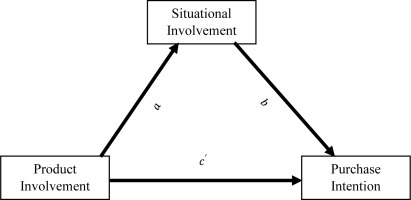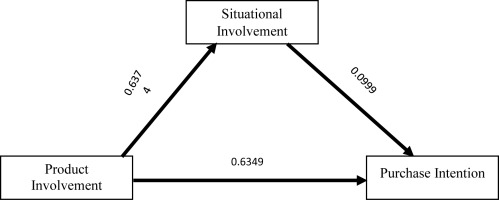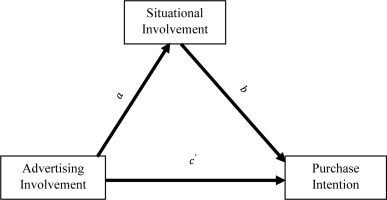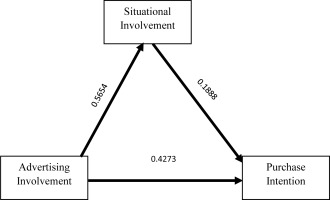Introduction
Bio-pharmaceutical supplements are widely used and essential for consumer health awareness [1]. They provide concentrated essential vitamins, serving as dietary supplements to enhance overall vitamin intake but not as disease treatments. Bio-pharmaceutical products have various purposes, including improving health, preventing diseases, and balancing diets in forms of tablets pills, etc. [2-4]. In Asian countries, including Pakistan, bio-pharmaceutical products traditionally prevent and treat diseases [5]. Social media plays a significant role in disseminating knowledge about these products [6]. While social media has transformed how businesses in Pakistan connect with customers, expanding their reach and fostering online relationships [7,8]. Studies highlight its cost-effective impact on purchase intentions through social marketing and consumer engagement [9-12].
Objective of study
The primary objective of the study is to understand how social marketing strategies resonate with consumers, influencing attitudes and purchase intentions [13] in Pakistan, and to assess consumers’ perceptions and attitudes regarding online social marketing by bio-pharmaceutical companies [14]. The study also focuses on how social media usage enhances brand awareness and fosters consumer loyalty, potentially driving revenue growth [2]. By examining this complex relationship, the study intends to provide insights to revolutionize marketing strategies and guide bio-pharmaceutical businesses toward more consumer-centric approaches.
Theoretical framework
Social marketing, rooted in various scientific disciplines, influences human behavior, targeting actions like purchasing and product promotion [15], aiming to benefit the public directly [16] to engage consumers [17,18]. Social media’s engagement-driven culture is reshaping marketing [19]. Customer engagement entails consuming user-generated content and engaging in social media marketing [20]. Marketers use analytics to target specific audiences [18], leveraging social interaction’s significant online presence [21]. Social media enhances customer interactions and facilitates decision-making [22-24]. Companies explore social media’s marketing potential, with platforms like Facebook and X (formerly Twitter) [25]. It enables precise audience targeting [26-28]. Small retail businesses benefit more from customer engagement and targeted marketing [29,30], multinational companies also find it a reliable and cost-effective marketing channel [31,32]. Quality product descriptions significantly impact online purchase intention [33-35]. Information quality, consumer needs, and cognitive involvement are crucial [36,37]. Situational and enduring involvement affect consumer engagement [34,35,38]. Compelling descriptions boost trust and deter consumers from switching to competitors [34,35]. In summary, product descriptions shape consumer involvement and purchase intent in online contexts [33,39].
Pakistan seeks to harness its bio-pharmaceutical sector for economic growth [40]. Therefore, the pharmaceutical industry’s transition towards digital marketing is evident as companies are beginning to assemble digital teams to strategize and innovate in this domain. Pharmaceuticals are investing more in digital marketing as the industry shifts towards a comprehensive digital approach, including prescription drugs [41]. The existing literature highlights a need for more research on how online social marketing influences consumer choices regarding biopharmaceutical products in Pakistan. While studies emphasize the importance of online marketing and consumer involvement, the Pakistani market’s specific dynamics and cultural nuances still need to be explored. Addressing this research gap is crucial to understanding the unique interplay between online social marketing and consumer behavior in Pakistan’s biopharmaceutical sector.
Theoretical framework in online social marketing, involvement theory, defined by Sheriff and Cantril in 1947 [42], plays a central role. It provides a foundation for understanding how consumers’ interest, relevance, and arousal toward marketing stimuli influence their behaviors. This theory is particularly relevant in healthcare, linked to personal values and needs, impacting purchase intentions and behaviors [13]. Involvement theory classifies involvement into product, advertising, and situational involvement, each shaping consumer attitudes and actions [43]. Involvement theory distinguishes between enduring and situational involvement. Enduring involvement is tied to an individual’s values and self-concept within a product category, remaining constant across purchase decisions. In contrast, situational involvement pertains to temporary interests and concerns related to specific purchases influenced by context [44]. Healthcare services often evoke higher situational involvement than other goods or services due to unique characteristics like consumer participation and intangibility [45].
Significance theories in marketing, involvement theory presented by Sheriff and Cantril in 1947 [46] has gained prominence, impacting consumer behaviors [47] and advertising persuasiveness [48]. High involvement signifies product relevance [49]. Features like health-related claims amplify product involvement [50]. Situational involvement positively affects purchase intentions, notably in healthcare contexts [51].
The study’s conceptual framework derived from previous theories includes purchase intention, product involvement, and advertising involvement [52]. At the same time, situational involvement [35] is appended as consumers’ perception of a product’s relevance and personal significance [53,54]. Advertising involvement encompasses cognitive and emotional responses to marketing stimuli and is driven by intrinsic interest in product-related information. It influences attitude formation and responses to promotional message [53]. Situational involvement explores consumer engagement with products or activities in specific contexts [55]. It triggers emotional responses and heightened attention [56]. Purchase intention reflects consumers’ willingness for future transactions, shaped by cognitive judgments and emotional responses [57]. This research addresses the gap in the literature regarding the impact of social media marketing on consumer choices for biopharma products in Pakistan, offering insights into consumer behavior dynamics in this sector. It informs marketing strategies and decision-making for stakeholders in the biopharma industry.
In the above Figure 1, it is examined that social media marketing affects consumer choices for biopharma products in Pakistan. The above-mentioned literature supports advertising and product involvement as independent variables. Advertising involvement measures consumers’ cognitive and emotional responses to ads, and situational involvement, as a mediator variable, assesses consumer engagement in specific contexts. These variables collectively influence purchase intention, representing consumers’ willingness to buy. Understanding these relationships provides insights for shaping marketing strategies in the biopharma industry.
Research hypotheses
Referring to the conceptual model, the study will explore 3 hypotheses to test the variables. The following hypotheses were proposed concerning achieving research goals by answering research questions:
– H1 (a): Product involvement is positively associated with purchasing intention of biopharma products;
– H1 (b): Situational involvement mediates between product involvement and purchase intention;
– H2: Situational involvement is positively associated with the purchase intention of biopharma products;
– H3 (a): Advertising involvement is positively associated with the purchase of intention biopharma products;
– H3 (b): Situational involvement mediates between advertising involvement and purchase intention.
Material and methods
Research design
The research design employed a quantitative approach to gather and analyze numerical data, focusing on elucidating relationships between constructs. The conceptual framework included product involvement and advertising involvement as independent variables, mediated through situational involvement, leading to purchase intention as the dependent variable [52,58]. A conclusive research design with a descriptive orientation was used to assess the impact of online social marketing of biopharma products [59]. This approach tested predetermined hypotheses and relationships, employing a survey method with a questionnaire containing 43 items organized into five sections [60-63]. The study targeted women familiar with the study’s terminology [64] and employed convenience sampling, resulting in a sample size of 500 female respondents [65], as in Pakistan females tend to be more oriented towards these products [12,66].
The study revealed the substantial impacts of online social marketing on consumer attitudes and actions concerning biopharma products. Cronbach’s Alpha assessed questionnaire reliability, which yielded a coefficient of 0.875, indicating acceptable reliability for the multidimensional data. The measurement and operationalization of variables followed establishing scales for each construct. Product involvement was measured using an eight-item, 5-point semantic differential scale [67-69]. Advertising involvement was assessed through a four-item, 5-point semantic differential scale [54,67]. Situational involvement was gauged with a five-item, 5-point semantic differential scale [35,38,67].
Results
The study’s findings contribute to the field’s existing knowledge. To valid [68] the scale’s reliability, 500 respondents were surveyed using a 27-question questionnaire. The Cronbach’s Alpha coefficient was 0.875, indicating acceptable reliability for our multidimensional data (Table 1).
Generally, a Cronbach’s Alpha coefficient greater than 0.7 is considered acceptable, indicating that the questions in the instrument are measuring the construct consistently and reliably. In this case, with a coefficient of 0.875, the 27 questions in the questionnaire have good internal consistency and can be trusted to assess the multidimensional data interested in studying. It strengthens the validity of survey results, suggesting that the responses accurately reflect the investigated underlying constructs
Table 2 reveals a significant positive link between product involvement and biopharmaceutical purchase intent (p-value=0.000, r(biopharma Products)(cognitive)=0.673, r_(biopharma)).
Table 2
Correlation between product involvement and intention to purchase
H1(a): Product involvement is positively associated with the intention to purchase biopharma products. (Products) (affective)=0.558, signifying the influence of product involvement on purchase intentions.
H1(b): Situational involvement mediates between product involvement and purchase intention. Figure 2. shows the path diagram for the proposed hypothesis
Model fitness represents
– It should have p>0.05
– Result (Default model)
– Minimum was achieved
– Chi-square = 12.5427
– Degrees of freedom = 2
– Probability level = 0.056
The structural equation model, assessed using latent variable structural equation modeling (LV-SEM), demonstrated an excellent fit. The chi-square value (12.5427, p=0.056) is insignificant, indicating an ideal fit. Key fit indices, including comparative fit index (CFI), normed fit index (NFI), and Tucker-Lewis index (TLI), were all above 0.95, while the root mean square error of approximation (RMSEA) was 0.028, meeting the criteria for an excellent fit
Notably, the chi-square value of 12.5427, coupled with a p-value of 0.056, demonstrates an insignificant p-value, indicating a favorable alignment between the model and the dataset. Furthermore, essential fit indices, such as the Comparative Fit Index (CFI), Normed Fit Index (NFI), and Tucker-Lewis Index (TLI), all surpass the 0.95 threshold, underscoring a robust fit between the model and the observed data. Moreover, the Root Mean Square Error of Approximation (RMSEA), with a value of 0.028, meets the criteria for an excellent fit. These findings provide compelling evidence that the LV-SEM model adeptly captures the intricate relationships among variables in the study. As a result, they instill confidence in the reliability and validity of the research findings, affirming the model’s accuracy in representing the underlying dynamics of the research.
Table 3 reports the results of hypothesis testing, confirming H1b: Situational involvement mediates the relationship between product involvement and purchase intention, with a significant positive path estimate of 0.6349 (<0.05) in the SEM model.
Table 3
Parameter estimates
H2. Situational involvement is positively associated with the intention to purchase biopharma products.
Indirect effect of X on Y through
Indirect effect of X on Y through
Direct effect of X on Y =
Total effects of X on Y =
So, the indirect effect is 0.6986. Table 4 shows product involvement’s direct and indirect effects on purchase intention. Findings revealed that situational involvement mediated the effect of product involvement on purchase intention. Thus, H1b supported and direct (0.6349, p<0.05), and the total effect (0.6986, p<0.05) was positively significant.
Table 4
Hypothesis testing
Model 1: Situational involvement is positively influenced by product involvement, with coefficients of 1.1134 and 0.6374, respectively.
Model 2: Purchase intention is significantly influenced by product involvement, advertising involvement, and situational involvement, with coefficients of 1.0253, 0.6349, and 0.0999, respectively.
The primary focus was on assessing the effects:
– the indirect effect (ab) showed that product involvement indirectly affects purchase intention through situational involvement, resulting in a value of 0.0637;
– the direct effect (c’) revealed that product involvement directly influences purchase intention with a coefficient of 0.6349;
– the total effect (combining indirect and direct effects) amounted to 0.6986.
In summary, the analysis supports the hypothesis that situational involvement mediates the impact of product involvement on purchase intention. Both direct (0.6349) and total (0.6986) effects were statistically significant, emphasizing the substantial role of product involvement in shaping purchase intention in this specific context (Figure 3).
H2.Situational involvement is positively associated with the intention to purchase biopharma products. Table 5 shows a statistically significant linear relationship between situational involvement and intention to purchase biopharmaceutical products (i.e., p=0.000). Moreover, there is a moderately positive association between situational involvement and intention to purchase biopharmaceutical products (i.e., r=0.513), which means that situational involvement affects the purchase of biopharmaceutical products.
Table 5
Correlation between situational involvement and intention to purchase
| Correlation analysis | Biopharma products | Situational involvement | |
|---|---|---|---|
| Biopharma products | Pearson correlation | 1 | 0.513 |
| p-value | - | 0.000 | |
| Situational involvement | Pearson correlation | 0.513 | 1 |
| p-value | 0.000 | - | |
It underscores the influence of situational factors on consumer behavior, particularly in the context of biopharmaceutical products. The circumstances or situations in which consumers find themselves can significantly shape their intentions to buy these products. Understanding and acknowledging this relationship can be valuable for businesses and marketers, as it highlights the importance of context-specific marketing strategies and interventions to leverage situational involvement and encourage the purchase of biopharmaceutical products.
H3 (a): Advertising involvement is positively associated with the intention to purchase biopharma products.
Table 6 shows a statistically significant linear relationship between advertising involvement and intention to purchase biopharmaceutical products (i.e., p=0.000). Moreover, there is a moderately positive association between advertising involvement and intention to purchase biopharmaceutical products (i.e., r=0.590), which means that advertising involvement affects the purchase of biopharmaceutical products.
Table 6
Correlation between advertising involvement and intention to purchase biopharma products
| Correlation analysis | Biopharma products | Advertising involvement | |
|---|---|---|---|
| Biopharma products | Pearson correlation | 1 | 0.590 |
| p-value | - | 0.000 | |
| Advertising involvement | Pearson correlation | 0.590 | 1 |
| p-value | 0.000 | - | |
A highly significant linear relationship exists between advertising involvement and the intention to purchase biopharmaceutical products, as indicated by an extremely low p-value of 0.000. Moreover, a moderately positive correlation (r=0.590) underscores that increased advertising involvement corresponds to a greater likelihood of intending to purchase biopharmaceutical products, emphasizing the substantial influence of advertising on consumer behavior in this context. It highlights the importance of effective strategies for promoting biopharmaceutical product sales.
H3 (b): Situational involvement mediates between advertising involvement and purchase intention. Figure 4 shows the path diagram for the proposed hypothesis.
With a sample size of 500, the goodness-of-fit test for the default model yielded a chi-square value of 9.468 with 2 degrees of freedom, resulting in a probability level of 0.088, slightly above the conventional threshold of p>0.05, indicating a reasonable fit.
The goodness-of-fit test for the default model yielded a chi-square value of 9.468 with 2 degrees of freedom, resulting in a probability level of 0.088, which slightly exceeds the conventional threshold of p>0.05. This observation indicates that the fit of the default model is reasonable. While the alignment between the observed data and the model’s expected values may not be perfect, the disparities do not attain statistical significance. Consequently, asserting that the default model approximates the data satisfactorily and does not necessitate substantial adjustments is reasonable. It is essential to contextualize these findings with the research objectives and interpret them accordingly. Nevertheless, in this instance, a p-value marginally exceeding 0.05 implies a reasonably good fit for the default model.
Structural model
Model fit
The LV-SEM analysis revealed an excellent model fit with a chi-square value of 9.468 (p=0.088), which was insignificant, indicating an ideal fit. Key fit indices, including the comparative fit index (CFI), normed fit index (NFI), and Tucker-Lewis index (TLI), were all well above the threshold of 0.95, with values of 0.9841, 0.9801, and 0.9523, respectively. The root mean square error of approximation (RMSEA) was 0.056, indicating an excellent fit. The model met the goodness-of-fit criteria, including CFI≥0.95 and RMSEA <0.06, confirming an excellent fit.
The results of hypothesis testing are reported in Table 7
Table 7
Parameter estimates for structural model
H3b: Situational involvement mediates between advertising involvement and purchase intention.
The SEM model shows an optimistic path estimate from advertising involvement to purchase intention (0.4273, p<0.05). Thus, H3b is supported.
Mediation analysis
Indirect effect key for mediation analysis
As shown in the table 8, the possible Models:
Model 1
Situational Involvement =a+b Product Involvement
Situational Involvement =1.3962+0.5654 Product Involvement
Model 2
Purchase Intention =a+b1 Advertising Involvement+b2 Situational Involvement
Purchase Intention =1.5074+0.4273 Product Involvement+0.1888 Situational Involvement
Indirect effect of X on Y through
Indirect Effect of X on Y through
Direct Effect of X on Y ==0.4273
Total Effects of X on Y = 0.1067 +0.4273= 0.5341
According to Table 8, the indirect effect of advertising involvement on purchase intention, mediated by situational involvement, was found to be 0.1068, supporting H3b, with both direct (0.4273, p<0.05) and total effects (0.5341, p<0.05) being statistically significant.
According to Figure 5, the intricate relationships between key variables were systematically examined in this scientific mediation analysis. Two fundamental models were employed:
– Model 1 scrutinized the connection between situational involvement (M) and product involvement (X).Our analysis revealed that situational involvement is influenced by product involvement, substantiated by coefficients ‘a’ and ‘b’;
– Model 2 delved into the complex interplay among purchase intention (Y), advertising involvement (X), and situational involvement (M), with product involvement (X) as the central focal point. Within this model, it was observed that purchase intention is intricately shaped by product involvement, advertising involvement, and situational involvement, each characterized by their respective coefficients 'a', ‘b1’, and ‘b2’.
The pivotal findings of our meticulous analysis revolved around the assessment of both indirect and direct effects: the indirect effect (ab) was meticulously calculated, representing the pathway through which product involvement (X) affects purchase intention (Y) by way of the intermediary, situational involvement (M). Our robust analysis yielded a statistically significant result of 0.1068, affirming that situational involvement plays a mediating role in the relationship between advertising involvement (X) and purchase intention (Y). The direct effect (c’) was determined to elucidate the direct impact of product involvement (X) on purchase intention (Y), yielding a coefficient of 0.4273. The total effect, encompassing indirect and direct effects, was meticulously calculated and amounted to 0.5341. This robust figure underscores the substantial overall impact of product involvement (X) on purchase intention (Y). In summary, our comprehensive scientific analysis provides empirical support for the indirect effect of advertising involvement on purchase intention, mediated by situational involvement, thereby substantiating hypothesis H3b. Moreover, product involvement emerges as a pivotal factor, exerting both direct and indirect influences on purchase intention, elucidating its prominent role in shaping consumer intentions within this context.
Discussion
With a dense population, Pakistan faces challenges with its pharmaceutical regulatory framework and the effectiveness of its public health system. Despite these hurdles, Pakistan aims to utilize its pharmaceutical sectors to drive industrial growth [40]. The study explores the impact of online social marketing of biopharma products on consumers, focusing on their level of involvement. Biopharma products have gained importance due to their perceived health benefits, driven by scientific validation and media marketing [70]. Health-related claims play a significant role in promoting these products. Consumer purchases of biopharma products are primarily motivated by health promotion. Situational involvement is positively related to purchase intention, and both situational and product involvement influence purchase intention [34].
Advertising involvement positively affects situational involvement and purchase intention. A high level of advertising involvement indicates that consumers pay more attention to ad content, which influences purchase intention [35]. Product involvement, including affective and cognitive aspects, mediates the relationship between product descriptions and purchase intentions. Affective involvement is a precursor to purchase intention [34]. Online shopping experience enhances cognitive and affective involvement, ultimately influencing purchase intention. Product descriptions play a significant role in situational involvement, aligning products with consumer needs. Brand familiarity positively affects consumer involvement and purchase intention [71].
Situational involvement has a linear relationship with purchase intention [34]. Advertising involvement also has a significant linear relationship with purchase intention [35]. Situational involvement mediates the relationship between advertising involvement and purchase intention [35,50,72].
This study highlights the complex interplay of factors influencing consumer purchase intention for biopharma products, including involvement, advertising, product descriptions, and brand familiarity. Understanding these dynamics can inform marketing strategies in this sector.
Conclusions
This study significantly enhances our understanding of consumer behavior in the Pakistani biopharmaceutical market, particularly in health and well-being. It confirms that advertising and product involvement positively impact situational involvement, which, in turn, influences purchase intention. It underscores the critical role of situational context in shaping consumer buying decisions, especially regarding products associated with health and well-being. Understanding this nuanced interplay between situational involvement and health-related purchase intentions is crucial for marketers and policymakers in the Pakistani biopharmaceutical sector to develop more effective strategies that align with consumers’ well-being and health-focused decision-making processes.
This study provides valuable theoretical insights regarding the interplay of advertising, product, and situational involvement in purchase intention in the Pakistani biopharma market, emphasizing the significance of compelling product descriptions, swift customer responses, and managing perceived risk through online reviews. Practically, it underscores the importance of social media marketing and strengthening purchase intention to enhance brand loyalty in this industry.
This research presents notable theoretical contributions. Firstly, it enriches our understanding of consumer behavior dynamics in the South Asian biopharmaceutical sector. Refining a structural framework dissects the intricate interplay involving advertising, product attributes, situational involvement, and their consequential influence on consumer engagement with health-related products. Moreover, it underscores the theoretical significance of precise product information dissemination and timely responsiveness in the healthcare sector, primarily online, shedding light on their pivotal roles in shaping consumer behavior and risk perception.
From a practical standpoint, these findings unveil promising avenues for businesses operating in the Pakistani biopharma industry. They emphasize the transformative potential of harnessing social media marketing strategies to bolster purchase intent and brand loyalty. By proactively disseminating dependable health information and aligning brand messaging with the ethos of health and well-being, companies can position themselves as stalwart proponents of healthier living. This strategic orientation not only fuels purchase intent but also fosters health-conscious consumer conduct, nurturing a brand loyalty that is intrinsically health-centric. In turn, it can play a pivotal role in advancing public health outcomes in Pakistan by promoting informed and health-conscious consumer choices.
For future research, some recommendations emerge. Firstly, employing longitudinal designs can provide a more comprehensive understanding of how social media marketing’s impact evolves in the biopharmaceutical sector. Secondly, expanding the scope by exploring a broader array of determinants influencing purchase intention is advisable. Thirdly, adopting a mixed-methods approach, combining quantitative and qualitative methodologies, can yield a more holistic and nuanced insight into consumer behavior. Lastly, investigating potential variations in consumer perspectives and behaviors across different regions is advisable to account for regional diversity within Pakistan.
Limitations
This study has a few limitations to consider. Firstly, the reliance on cross-sectional data may only partially capture the dynamic nature of social media marketing in the biopharmaceutical sector. Secondly, the study focused on certain psychological factors while overlooking emotions, trust, and social influences, which could play significant roles. Additionally, the overreliance on survey data may limit the depth of insights, and future research could benefit from incorporating qualitative data. Finally, it is essential to recognize that the study’s findings primarily apply to the Pakistani context, and generalizing them to other settings should be approached cautiously due to potential cultural, regulatory, and market differences.












